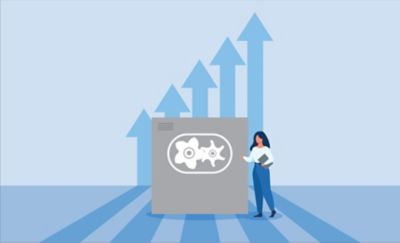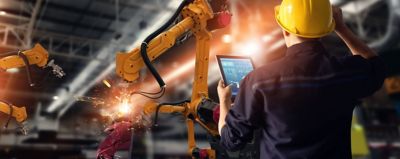Compressed air is a vital utility in many industrial processes, often considered as essential as electricity, water, or natural gas. However, it is also one of the most expensive utilities, with significant energy consumption and associated costs. In this comprehensive guide, we will explore how to save money on compressed air, examin cost calculation, and provide practical solutions to reduce expenses and improve efficiency.
Understanding Compressed Air
Compressed air is air that has been put under pressure to increase its density and pressure. It is largely used in industrial processes thanks to its several benefits, such as easy storage and wide availability.
Despite its advantages, generating compressed air is energy-intensive, consuming more than 10% of the world's electricity.
Why is Compressed Air So Expensive?
The high cost of compressed air is primarily due to the significant amount of electricity required to generate it. In some manufacturing facilities, the cost of generating compressed air can account for as much as 30% or more of the total electricity consumed.
Despite the amount of electricity to produce compressed air, there are several variables that can influence and reduce the costs of compressed air. Some of these include the demand of compressed air, the type of technology used, the age and the usage of the compressor.
An example is switching from a fixed speed to variable speed technology. Let's assume your production system's air requirement varies during the day and the week. If you have a fixed speed model, your compressor produces more compressed air, leading to wasting energy. In this case, you can consider switching to a variable speed screw compressor, that adapts the airflow to your needs.
Factors to consider for a proper Compressed Air Cost Calculation
Calculating compressed air costs involves several factors, such as the size of the compressor, the number of hours of operation, and the cost of electricity.
Also, maintenance and heat recovery should also be taken into account for a more accurate cost assessment. Maintenance can be affordable if its scheduled: regular maintenance services help to find issues and avoid sudden breakdowns.
Instead, if you don’t inspect the whole compressed air system regularly, you won’t notice possible leaks, rust and other issues that can break the whole system. These issues can be costly as well as the unplanned support of a technician. Learn more about how to find common leaks on this article.
Heat recovery systems are a good way to reduce the impact of your compressed air system on your bills. You can reuse the heat from compression in various ways within your company. You can read more in this article.
Practical Solutions to Save Money on Compressed Air
There are several ways you can save money on compressed air. While we have introduced some of these solutions, here is a list of main activities you can apply immediately:
Optimising Ambient Temperature
The ambient temperature significantly affects the efficiency of air compressors. In general, machines that are operating in cooler environments tend to be more efficient. By optimizing the ambient temperature near the compressor, you can reduce energy consumption and lower costs on your bills.
Reducing Leaks
Leaks are a common issue in compressed air systems, resulting in substantial energy waste. Regularly checking your compressed air system and repairing leaks can lead to significant savings. Even small leaks can add up over time, so it's crucial to address them promptly.
Determining Air Demand
Understanding your actual air demand is essential to optimise your compressed air system. We offer a free audit service and a compressor monitoring system, which controls and analyses compressed air status 24-7. Among all notifications, this tool also provides recommendations to reduce energy consumption and costs.
Replacing Old Machines with Smart Compressors
Old compressors are often less efficient and more costly to operate. Replacing them with a new compressor equipped with the improved technology can lead to significant energy savings and improved production efficiency.
Another solution is switching from fixed speed to variable speed models, especially when compressed air demand varies during the day and the week. As mentioned, variable speed screw compressors can adjust their output based on demand, reducing energy waste.
Impact on Surrounding Environment
Compressed air operations consume a lot of energy, resulting in high CO2 emissions. Implementing practical solutions such as using the right compression technology and reducing leaks can significantly improve your impact on local environment.
Get tailored advice
Still have questions after reading? Our expert is ready to help you make sense of it all and guide you to the best solution.
Write to an Expert Today – Get the answers you need.






